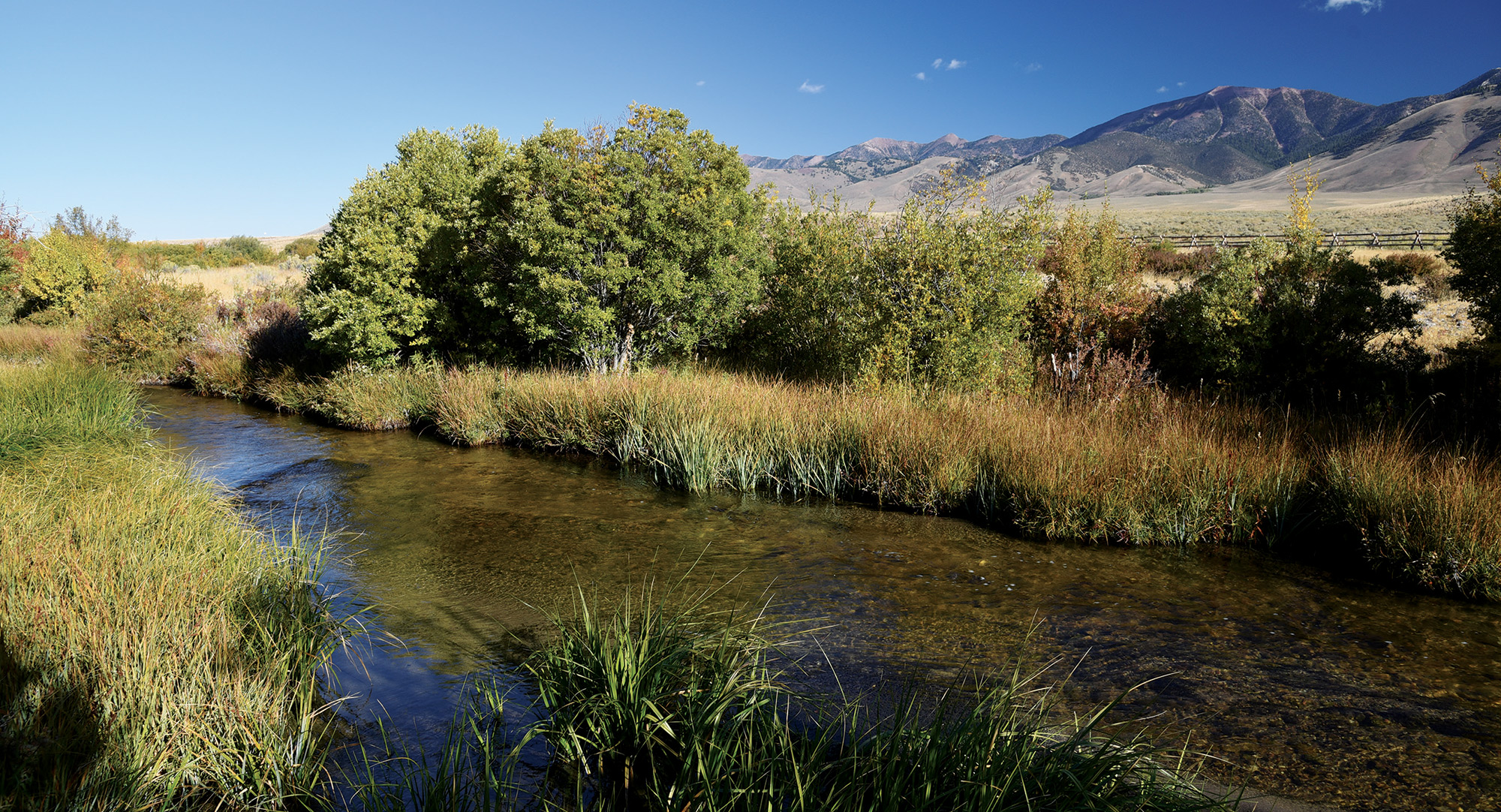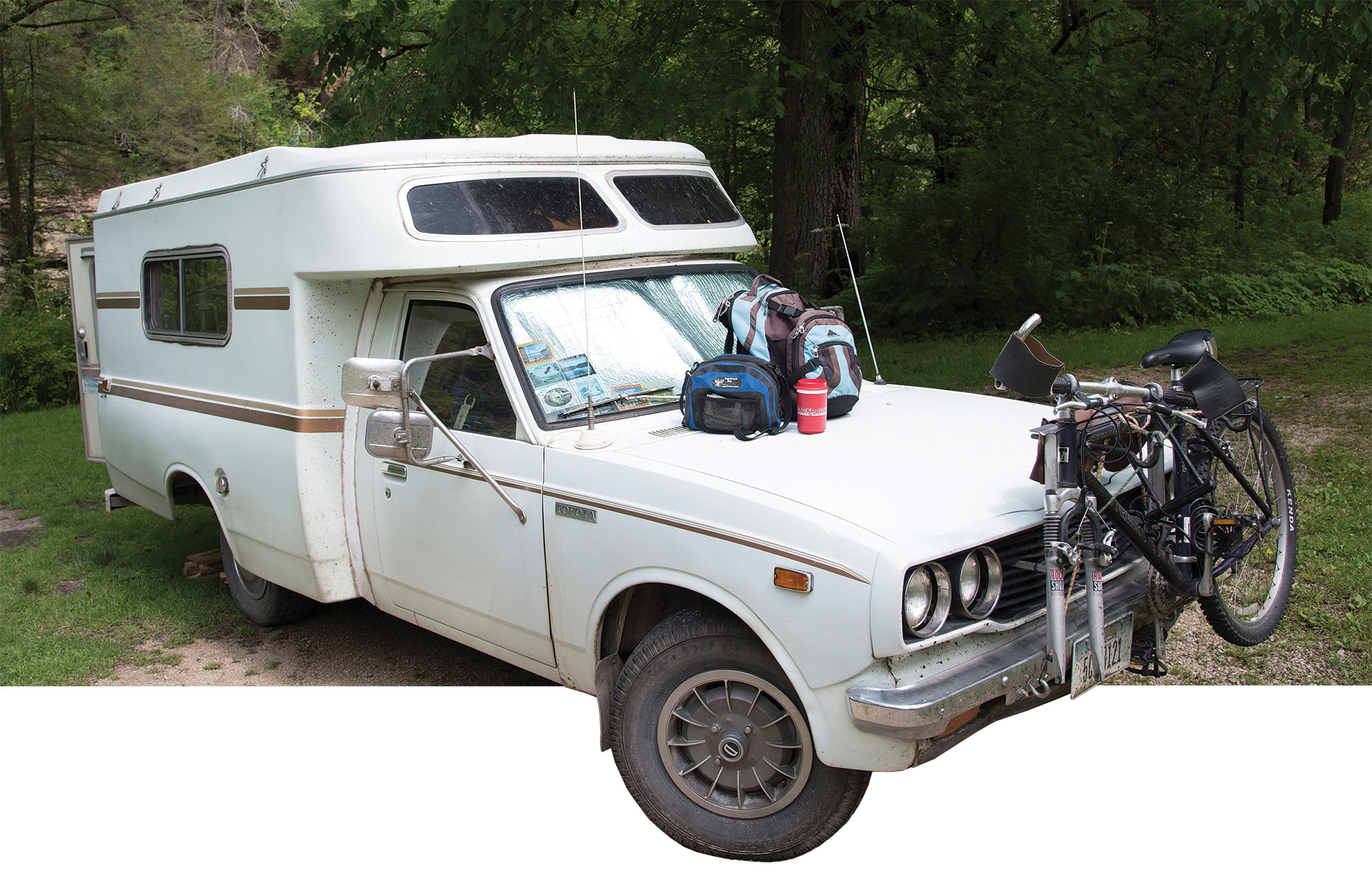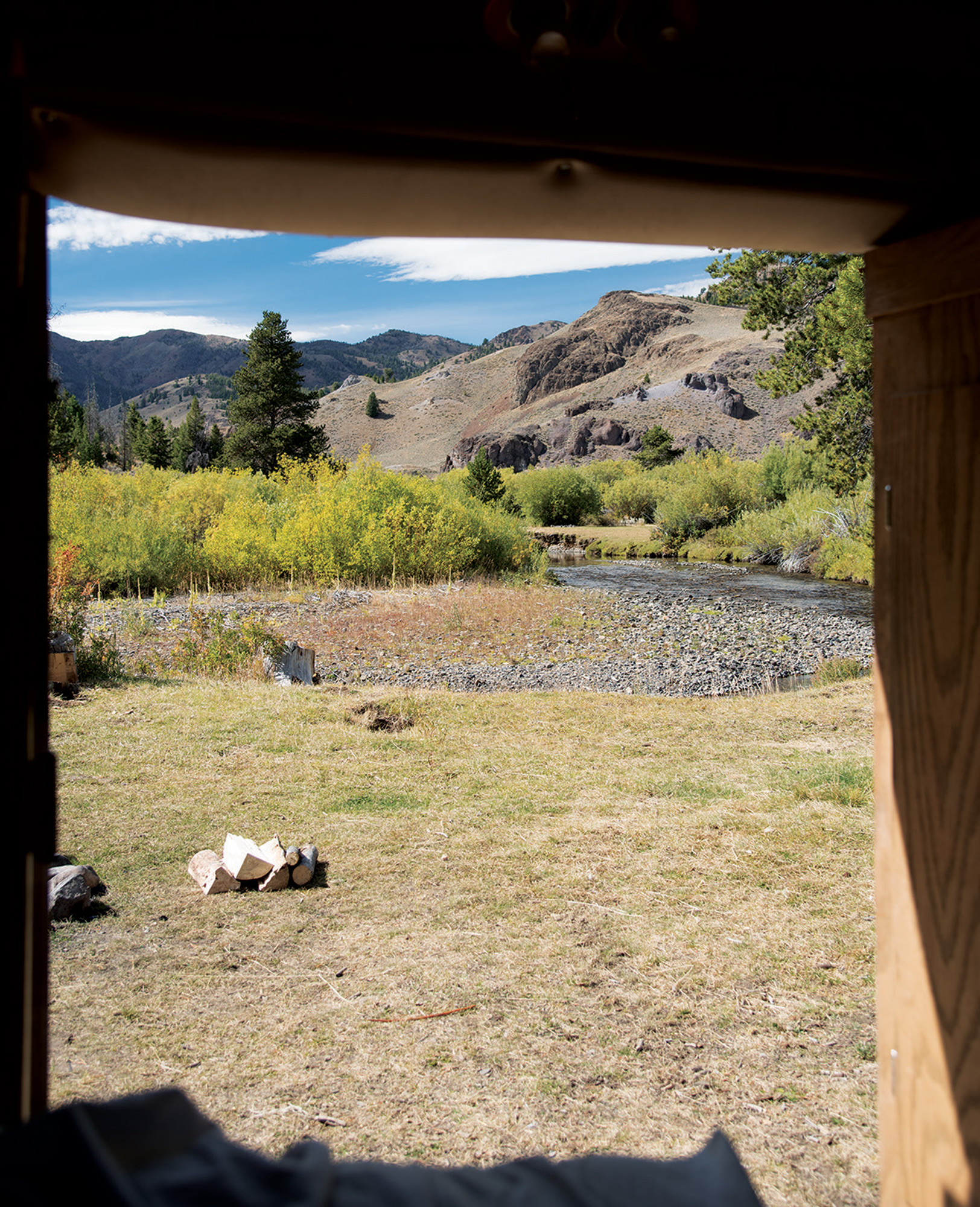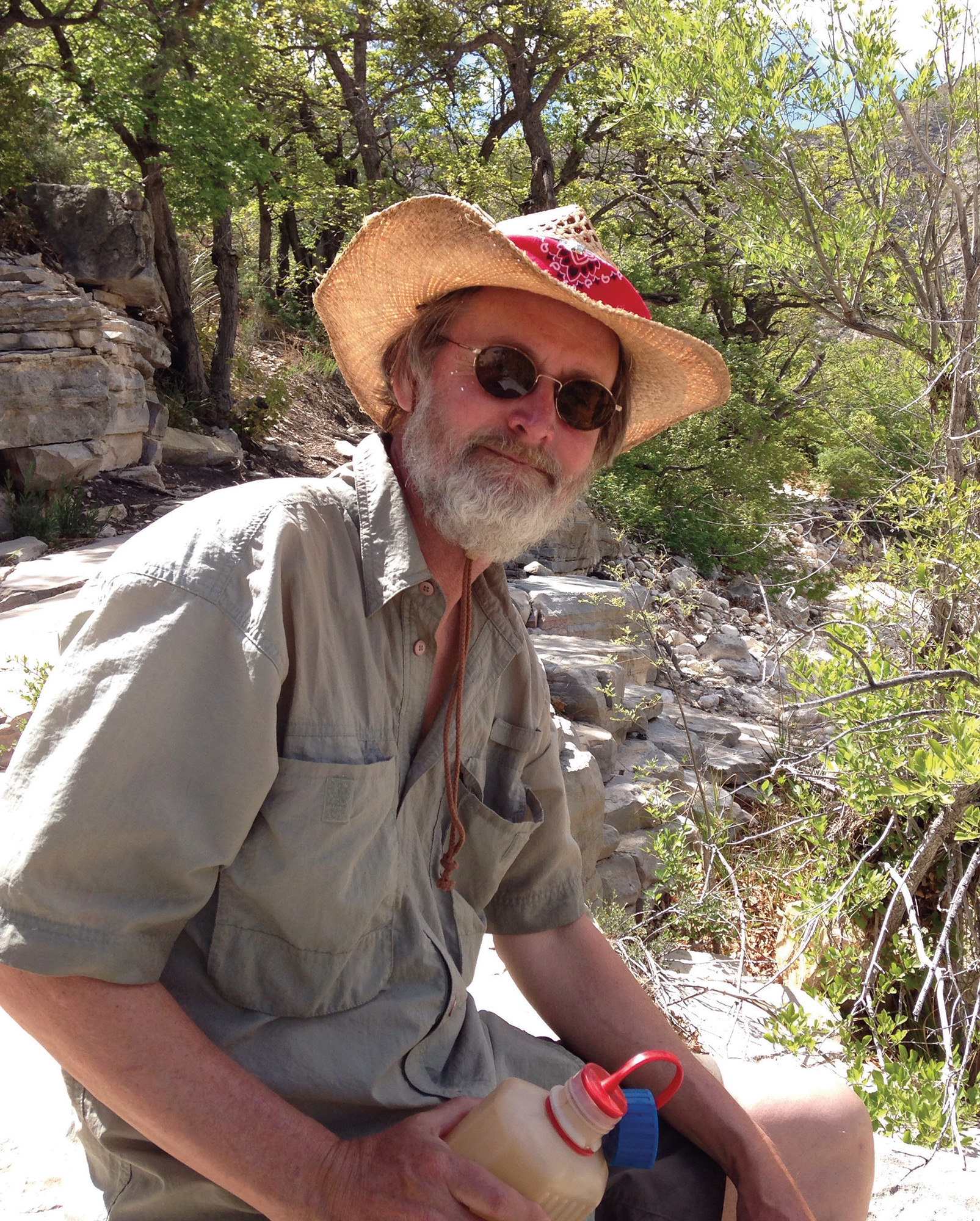
15 Feb Refuge by the River
Just as you feel when you look on the river and sky, so I felt,
Just as any of you is one of a living crowd, I was one of a crowd,
Just as you are refresh’d by the gladness of the river and the bright flow,
I was refresh’d … — Walt Whitman | From “Crossing Brooklyn Ferry” | Leaves of Grass
MY TRUSTY CAMPER AND I slipped into a perfect campsite beside Idaho’s Little Lost River headwaters on Summit Creek. Framed by the soaring Lehmi and Big Lost ranges, at 6,400 feet Summit Creek was pure trout water, overhanging willows, and native grasses. The September sun was setting, full moon about to rise, campfire blazing. There were only two other parties camped at the primitive campground: a pair of friendly moose hunters at the far end, and my new pal — Bone Man — in his trailer downstream. While visiting with the idiosyncratic Bones that morning, I noticed that he appeared to have no vehicle; most likely, I thought, he had a buddy who was out hunting.
Sure enough, a pickup arrived at Bone Man’s site just before dark. There appeared to be some commotion, then soon enough the vehicle came bouncing down the rutted road toward my camp. I assumed with some apprehension that Mr. Bones and his pal were stopping by for “a few beers and a little bullshit,” as the former had suggested he might. I reluctantly rose to greet them as they pulled in.
Getting to the truck, I was surprised to see that it wasn’t Bones and his buddy. Instead, a sullen woman glared at me suspiciously with her one good eye from the passenger seat, while her ruddy-faced husband raged and snorted like a wounded rhinoceros. After a brief, angry explanation, I quickly realized my peace had suddenly devolved into a situation, a potentially serious one: “The son-of-a-bitch broke into our trailer, drank all my beer, and cleaned out the food. And you wouldn’t believe the damn mess he left on our kitchen table.” When I mentioned the hospitable Bones had earlier invited me into the trailer to examine his specimens, I thought the man’s head might explode. Before roaring off in pursuit, Rhino added ominously, “You better let me know if you spot him! I’ve got a gun, it’s loaded, and if I see the asshole I’m going to shoot him.”
A Refuge on the Road
Serious fly anglers have special streams interwoven with their lives, like best friends. They also probably have a stalwart fishing vehicle that’s closely intertwined with these memories. In my case, it’s a four-cylinder 1977 Toyota Chinook microcamper with 242,000 miles on it.
In the early 1980s, my dad bought the truck mainly for Minnesota whitetail hunting trips. Being a skilled craftsman, he planned and built the camper’s interior, with modest help from me. Aside from the vehicle’s superb reliability, it was and remains a masterpiece of thoughtful design, every inch allocated to useful purpose. Even with a sink, propane stove, icebox, and foldout bed, there’s still plenty of space for half-a-dozen fly rod cases, fully-loaded vests, and extra waders. When I was in my 20s, Dad let me borrow it occasionally, including for a long fishing road trip through Colorado, Wyoming, and Montana. I gradually fell in love with the truck.
In grad school at the University of Minnesota, a classmate, Mary, and I decided to go AWOL for seven weeks in 1987, taking a fall break from thesis writing to travel and fish across the Northern Rockies. I asked my dad if I could borrow his camper again for the trip. To my surprise, he declined, but offered to sell it to me for $2,000; a tremendous bargain but perilously close to the totality of my worth in those dirtbag days. For weeks he lobbied tenaciously, eventually wearing me down. I finally coughed up the cash and the camper was mine. Aside from eventually marrying Mary and moving to Montana in 1994, it was the best decision I ever made.
I estimate I’ve now spent at least two years of my life in the camper — two of the best — mainly on far-flung trout streams. As with many good things, less is more with my camper: computer-free, easy to fix, roll-down windows. The utterly dependable 20-R engine never lets me down, no matter how much backroad duress I inflict on it, though I did need to be towed down Minnesota’s North Shore of Lake Superior into Duluth one time when the air pump locked up, belt smoking furiously. As much as any machine can be, my camper is a best buddy. I sometimes fondly pat the dashboard while rolling down the highway, like a thankful benediction from St. Christopher, patron saint of travelers.
The camper and I have covered serious, hallowed ground: myriad iconic trout streams in the Northern Rockies; maze-like canyons, mesas, and deserts across the Southwest; bucolic limestone spring creeks in the Upper Midwest’s Driftless Region; expansive prairies, badlands, and ponderosa-fringed hills in the Dakotas and northwestern Nebraska; rugged Lake Superior shorelines in Minnesota and Michigan; foggy Pacific coasts, rainforests, and cone-shaped Cascade Range volcanos; and the sinuous Ozark streams where Mary and I eloped.
But amid the hundreds of campsites and thousands of trout my camper brought me to, the most enduring memories are from the human encounters along the way. Flung open to murmuring riffles and evening hatches, the rear door of my camper has been a portal to a diverse, quirky parade of humanity.
Hangin’ with Mr. Bones
That first morning on Summit Creek, I saw Mr. Bones comfortably ensconced in a red lawn chair next to the trailer, rocking his head, gesturing wildly to the indigo sky, and chanting indecipherable incantations like a crazy Beat poet. He unexpectedly looked up and caught my roving eye. Snapping out of his trance, he stood up and invited me over. Eccentric — but loquacious and friendly — he soon confided, “Hey man, I’ve got something very cool to show you; step in the trailer.”
Inside, it somehow seemed a little too lavish for Bones’ weathered visage — a palace compared to my compact little camper — well-furnished, with an enormous satellite TV. A large garbage container overflowed with empty beer cans while the kitchen table was incongruously piled with bones, some wrapped in plastic, as if being meticulously prepared for shipment to the Smithsonian. With some concern, I also noted a menacing saber on the table. Bones excitedly pointed to one skull. His dirty, claw-like fingernails suggested he had been excavating the surrounding, sage-clad hillsides with the determined ferocity of a badger: “Dude, this one’s a baby T. rex skull, worth at least half a million on the market, and these others …” He fondly riffled through more supposed dinosaur fossils, rambling at length about their rarity and value.
Now I’m certainly no paleontologist, but the collection appeared to be ordinary animal bones, not fossils. Nonetheless, Bones was passionate about his prizes. Before finally extricating myself from the trailer, I tried to placate him: “If you sell all this stuff you can go buy a mansion in Sun Valley.” He shook his head and explained that his dream was to establish a series of dinosaur museums in the area, a fantastical notion amid such isolation. Before I headed off, Bones enthusiastically offered fishing tips and directions to a nearby hot springs.
Hours later, well after dark, a pair of county sheriff SUVs pulled up to Mr. Bones’ trailer. Several cops began strafing the creekside willows with high-powered flashlights. Apparently the actual, aggrieved trailer owners had come to their senses; instead of continuing to hunt Bones, they had driven far enough out of the valley to secure cell phone service and call law enforcement personnel, who drove 60 winding miles from the sleepy county seat of Challis.
With officers on the scene, I ambled over to get the latest scoop. A young woman who had pulled in to a nearby site around sunset also stopped by: She had observed an edgy, disheveled guy with a backpack skedaddling down a jeep trail shortly before Rhino and his wife appeared. It turned out that the couple had been elk hunting the previous weekend, stupidly and selfishly leaving their empty trailer to monopolize a campsite for the entire week, returning to discover that Mr. Bones had made himself at home. As delusional as Bones appeared, he had the intuition to leave Friday evening — just in time.
While we visited, I noticed that Rhino’s picnic table was also covered with bones. One of the officers who had examined the artifacts declared, “I think they’re all just cattle bones — there’s a lot of dead cows up here.”
The next morning, before I left, I ambled by the trailer one more time. Rhino and his spouse were gone again, probably getting resupplied in Challis or MacKay. By the time I packed up my camper, I was the last soul left. Except, perhaps, for Mr. Bones, who I suspected was watching me from the willows, patiently waiting to sneak back to the trailer and retrieve some of his treasure.
Public Crossroads: Homeless on Silver Creek
The great chronicler of the American West, Wallace Stegner, famously observed that our national parks represent “the best idea we ever had.” If that’s true, our less developed system of public stream accesses might be the second best.
Rich and poor, Democrats and Republicans, fly-fishing poseurs and hardcore steelhead bums sleeping in their freezing trucks: All are welcome to responsibly share our publicly-accessible river banks, our natural town squares. It’s not always decorous but mostly it works. As Americans, would we really want it otherwise?
One September, our intrepid camper had Mary and me on Idaho’s Loving Creek, a high desert headwater feeding fabled Silver Creek. Summer crowds had evaporated; it was just us, lingering Tricos, burgeoning Baetis, bruiser-sized trout, and the guy at the other end of the campground. He was without a vehicle, his possessions in garbage bags next to his sagging tent. A significant part of his belongings were comprised of fly-tying equipment, deployed at a picnic table for afternoon sessions. He was an expert fly angler and tyer, generous with his tips and patterns. I wasn’t sure where he was drifting next, or how, but the river banks were home, just like they were temporarily for us. As the water rat explained to the curious land-dwelling mole in Kenneth Grahame’s children’s story, The Wind in the Willows:
“And you really live by the river? What a jolly life!”
“By it and with it and on it and in it,” said the Rat. “It’s brother and sister to me, and aunts, and company, and food and drink, and (naturally) washing. It’s my world and I don’t want any other. What it hasn’t got is not worth having, and what it doesn’t know is not worth knowing.”
Brawl on the Bitterroot
It was an unforgettable sound: A fist smacking a drunken face, an unmistakable splat! above the stream’s murmur. Aside from the miscreants in the adjacent campsite, we had the access on Montana’s Bitterroot River all to ourselves. Until then it had been a perfect fall evening.
This was our inaugural 1987 road trip in my dad’s camper. Along the way we camped at many fishing access sites. While we found plenty of trout, we also learned that stream accesses — often remote, unpatrolled, and lightly visited in fall — can be magnets for characters and rogues.
Our half-dozen scruffy neighbors started out mellow, with a modest fire and low conversation, but as empty beer cans and bourbon bottles piled up, the blaze grew to bonfire proportions and the voices became animated shouts. Sparks and slurred four-letter words drifted skyward. With that first punch, the campsite exploded into mayhem: breaking glass, violent diatribes, and shadows fleeing into the forest and even the icy Bitterroot.
Fearing gunfire, Mary, and I quickly retreated to our camper, killed the lights, and hunkered down. In the pre-cell phone era, calling the county sheriff wasn’t an option. Surprisingly, the storm passed without casualties; the yelling stopped, and the drunks gradually stumbled back to their campsite to make up and pass out. Mary had seen and heard enough, however, and sensibly insisted on leaving, in spite of the good fishing. We rolled upriver to the next Bitterroot access, confident we’d seen the last of them.
After fishing the Bitterroot the next day, we retired to our new campground, which was slightly more populated and even had volunteer hosts. Our hearts plummeted, however, when a party pulled into the empty site next to us — the same yahoos from the previous night. The script unfolded similarly: peace and brotherly love early on; heavy drinking around the campfire; rising voices; pirate-like cursing; and then all hell breaks loose.
Once again, we quickly doused our fire and retreated to the camper. Fortunately, the hosts were able to contact local law enforcement, who arrived just as the altercation appeared to be reaching a tragic crescendo. The officers hunted our neighbors down in the woods with flashlights, then held a lengthy interrogation with the reassembled ruffians. We were surprised no one was hauled off in squad cars, but soon our neighbors passed out again and all was quiet, except for the Bitterroot’s reassuring whispers.
Yellowstone Murder Mysteries?
Mary and I were enjoying a leisurely, five-day August float on the Yellowstone River, hurling hoppers and camping on flood-scoured islands. Before setting off, we arranged our own shuttle, leaving our beloved camper in the lot at a cottonwood-shaded, downstream fishing access.
When we finally beached our raft at the end of a wonderful journey, we were greeted by the camp host: “Are we glad to see you!” Wondering why our arrival elicited such enthusiasm, he explained what unfolded while we were lost in our river reverie. Someone had made a disturbing discovery on the riverbank, directly in front of our parked truck: a pair of discarded shoes, an open bait container, and a thick trail of blood across the cobbles, disappearing into the river.
The county sheriff was summoned. Noticing our empty camper nearby — Mary once suggested it looks like a ride Ted Kaczynski might have owned — he let himself in the back, checking for crime scene clues. After we returned home to Helena, we had a message on the answering machine from him explaining a few more details. But as far as we know, it’s all still a mystery.
It echoes another enigma on the Yellowstone. At a Paradise Valley access, Mary and I were sitting outside our camper on the bank, admiring a full moon, the quicksilver river, and looming Absaroka Mountains, when a truck slowly rumbled over the upstream bridge. Midway across, the vehicle stopped, headlights going dark. In the moonlight, we watched two ghostly figures emerge and lift something heavy and inert from the pickup’s bed, wrapped mummy-like in a tarp. Like mafia hit men, the silhouettes struggled with the ungainly weight, then heaved it into the river with an enormous splash. The truck rumbled to life and vanished into the night.
The next morning we explored the Yellowstone’s swift, braided channels, taking pretty rainbows that leaped and battled like mustangs. But it was hard to keep our minds from drifting back to the previous night. The episode was dreamlike and we had a hard time believing the scene wasn’t a mirage. And I still wonder what “it” was: a dead farm animal, illegally shot wolf or grizzly bear, or something even more sinister? Once again, it’s a secret that — as far as I know — the river hasn’t surrendered.
Along public river banks, fish and their aquatic environments will always be the marquee attraction for fly anglers, but the variety of people drawn to moving water for other reasons is equally fascinating. The Greek philosopher Heraclitus noted, “You can’t step into the same river twice,” but the same could also be said about the changing human cavalcade along the banks. Be responsible, courteous, and kind; sit back and watch the world turn; enjoy the show — like Mary and I have from the back of our vintage camper.
- The author’s 1977 Toyota Chinook micro-camper, customized to accommodate his fly-fishing road trips, has been a reliable part of his sporting life for the last 30 years, including trips to Idaho’s Summit Creek, lower left.
- The author fishes the headwaters of the Little Lost River on Summit Creek.
- When staring out the backdoor of a fishing camper, few sights are as welcome as a campsite beside a mountain stream.
- Author Jeff Erickson








No Comments